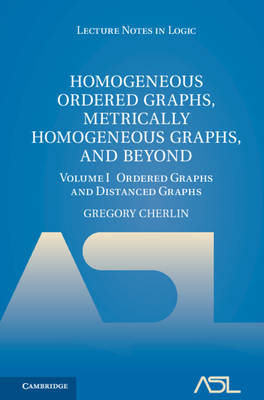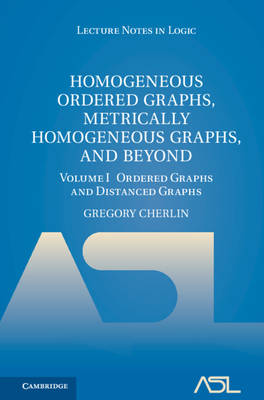
Door een staking bij bpost kan je online bestelling op dit moment iets langer onderweg zijn dan voorzien. Dringend iets nodig? Onze winkels ontvangen jou met open armen!
- Afhalen na 1 uur in een winkel met voorraad
- Gratis thuislevering in België vanaf € 30
- Ruim aanbod met 7 miljoen producten
Door een staking bij bpost kan je online bestelling op dit moment iets langer onderweg zijn dan voorzien. Dringend iets nodig? Onze winkels ontvangen jou met open armen!
- Afhalen na 1 uur in een winkel met voorraad
- Gratis thuislevering in België vanaf € 30
- Ruim aanbod met 7 miljoen producten
Zoeken
Homogeneous Ordered Graphs, Metrically Homogeneous Graphs, and Beyond
Gregory Cherlin
€ 201,95
+ 403 punten
Uitvoering
Omschrijving
This is the first of two volumes by Professor Cherlin presenting the state of the art in the classification of homogeneous structures in binary languages and related problems in the intersection of model theory and combinatorics. Researchers and graduate students in the area will find in these volumes many far-reaching results and interesting new research directions to pursue. In this volume, Cherlin develops a complete classification of homogeneous ordered graphs and provides a full proof. He then proposes a new family of metrically homogeneous graphs, a weakening of the usual homogeneity condition. A general classification conjecture is presented, together with general structure theory and applications to a general classification conjecture for such graphs. It also includes introductory chapters giving an overview of the results and methods of both volumes, and an appendix surveying recent developments in the area. An extensive accompanying bibliography of related literature, organized by topic, is available online.
Specificaties
Betrokkenen
- Auteur(s):
- Uitgeverij:
Inhoud
- Aantal bladzijden:
- 386
- Taal:
- Engels
- Reeks:
- Reeksnummer:
- nr. 53
Eigenschappen
- Productcode (EAN):
- 9781009229692
- Verschijningsdatum:
- 13/10/2022
- Uitvoering:
- Hardcover
- Formaat:
- Genaaid
- Afmetingen:
- 150 mm x 230 mm
- Gewicht:
- 612 g

Alleen bij Standaard Boekhandel
+ 403 punten op je klantenkaart van Standaard Boekhandel
Beoordelingen
We publiceren alleen reviews die voldoen aan de voorwaarden voor reviews. Bekijk onze voorwaarden voor reviews.











